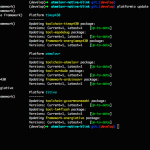![]() I received a lot of feedbacks after PlatformIO had been released. Some people have been asking me the interesting questions, such as:
I received a lot of feedbacks after PlatformIO had been released. Some people have been asking me the interesting questions, such as:
Also I’ve received valuable answers and wishes from the “LinkedIn Professionals” (here and here). Most of them like to work with an IDE and preferably Eclipse IDE. As PlatformIO is a console tool with rich commands interface it can work with different IDEs as the “builder, uploader & debugger”.
Today I want to explain how we can build and debug Atmel AVR (Arduino) based project using Eclipse IDE + PlatformIO.


 The
The 